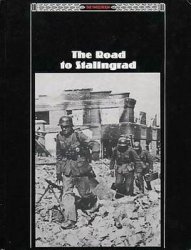The foregoing discussion highlights the difficulties facing household archaeologists in their attempts to understand the behaviors and relationships of the people behind the structures and artifacts that they dig up. These difficulties stem from the fact that a household is not an archaeological phenomenon but an ethnographic one. Thus, many of these difficulties may be resolved by recourse to ethnographic, historical, or pictorial analogy.
Ethnographic Analogy
Ethnographic and ethno-historical analogy is useful for developing an understanding of the archaeological remains of households, particularly in prehistoric contexts. For example, Susan Kent distinguished differences in the construction and use of domestic space by contemporary Navajo, Euro-American, and Spanish-American households. The contemporary Navajo domestic space, and its observed differences from the other households, could then be used to help explain the use of space in ancient Navajo houses. Ethnographic studies of contemporary agricultural communities in the Maya lowlands can help in interpreting the spatial arrangements of house lots in precolonial and colonial communities in the Yucatan in Mexico but, as Rani Alexander warned, the often synchronic-ity of ethnographic and ethno-archaeological models do not necessarily reflect the diachronic processes found in the archaeological record.
But ethnographic and ethno-historical analogy can also have a normalizing effect on past behavior, by superimposing patterns of modern or recent household behavior on previous sociocultural situations. For example, the use of architectural parallels between historic and prehistoric domestic spaces to interpret the use of the latter ignores the changing uses of individual spaces that have no impact on the structure of a house. Ethnography is fundamental to the study of household archaeology, but ethnographic data do not describe household behavior in the past. Rather ethnographic data can be used to explore variation in household behavior and highlight the potential for diversity and change in domestic worlds. That is, ethnography is a ‘signifier’ of complexity rather than a ‘prescriber’ of household behavior. Cross-cultural studies, of different parts of the world, are important to deepen our understanding of the range of potential variability in household behavior that the archaeological remains could represent.
Textual Analogy
Household archaeology is also concerned with the households of historical periods. The availability of contemporaneous written documentation for the Classical, ancient Egyptian, Medieval, and post-Medieval worlds, and from much of the ancient Near East, often provides archaeologists working in these areas with a full body of data for the investigation of household behaviors. However, the relationships between the textual and the archaeological material can be as complex and as difficult to grasp as the relationships between prehistory and ethnography. Sometimes in historical archaeology some specific members of an archaeologically identified household may also be identified through documentary evidence (e. g., Nero and his Golden House in Rome). However, attempts to relate archaeological remains to extant textual evidence must be sensitive to the fact that the texts themselves are selective. For example, textual material often emphasizes and reinforces the roles of a society’s elites, while archaeology can frequently provide evidence of household behavior across a much broader social spectrum, even within elite households. Like ethnographic analogy, attempts to read the archaeological record, through direct associations with documentary evidence, can lead to a normalization of past domestic behavior which denies its historic, regional, or status specificity. Such readings serve to perpetuate perspectives of the inconsequence of household dynamics in the writing of history. They also compromise the ability of archaeological data to provide information which cannot be directly associated with textual information.
As with ethnographic analogy, textual analogy can be used to negotiate with the archaeological remains, not to define them. For example, ancient Greek texts have been used to argue for strongly segregated households divided along gender lines, but there is a lack of archaeological evidence for strictly gendered divisions of domestic space. This has led to a reassessment of the textual evidence and a proposal that binary oppositions in the Greek world might be more evident in status than in male:female relationships. Similarly, negotiations between documentary and archaeological evidence for household composition in gold fields in colonial Australia challenge perceptions of them as being male dominated.
Misuse of textual analogy and biased assumptions about task division between different household members can render invisible the activities of subordinate members of the household. A critical approach to both archaeological and documentary data can investigate relationships between ideological perspectives of household behavior, as often presented in the documentary evidence, and actual household practice, as presented in archaeological remains.
Pictorial Analogy
Contemporaneous artistic or commemorative representations, such as sculpture, paintings, etchings, drawings, or early photography, often include depictions of dwellings and household objects and activities. If these representations have chronological and social proximity to the archaeological data, they can provide useful pictorial analogy. For example, depictions on Greek vases of men and women in association with moveable furniture and engaged in household activities provide evidence for the engendering of these activities in the ancient Greek world. Artist’s depictions or early photographs of gold-mining settlements help to explain and interpret the fragmentary remains of these temporary dwellings.
However, pictorial material can also distort our view of the material past. Like textual and ethnographic material, it embodies the world view of the creator which is not necessarily representative of the world views and the practices of those depicted, or indeed of the individuals represented by the archaeological remains. Such media often portray stereotypical situations or, conversely, desirable and imagined situations, like the numerous magazines in the late twentieth and early twenty-first centuries that advertise idyllic household furnishings and settings. Thus, pictorial representations can also be imbued with their own agenda and so pictorial analogy can, again, reproduce ideal rather than actual behavior.
Modern Analogy
We frequently use, often inadvertently, analogy with our own culture to infer the nature of households in past societies. Perceptions that houses are occupied by nuclear families are probably the most all-pervading of such analogies. We can use archaeological evidence, and cross-cultural analogy, to test such inferences. While any type of analogy has the potential to bias interpretations of archaeological remains, if used critically, analogy provides essential data for household archaeology. The question is not whether or not analogy is appropriate but whether the particular analogical inferences made are appropriate to the particular archaeological data.
In summary, cross-cultural analogy - ethnographic, textual, pictorial, and modern - is a particularly important analytical tool in household archaeology, not to describe household behavior in the past but to guard against assuming any universal concepts of household uniformity.




 World History
World History
![Black Thursday [Illustrated Edition]](/uploads/posts/2015-05/1432470149_1431513568_003514b1_medium.jpeg)








